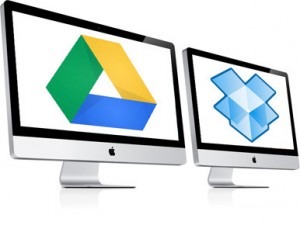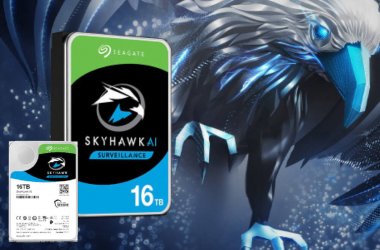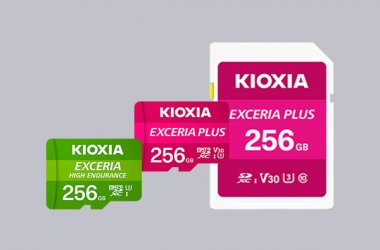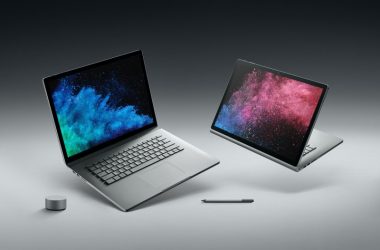 In this corner, weighing in at 50 million users, and five years’ growth under its belt, the filer from Manila-er, the forest that counts all its trees, the synchronized, syncopated master of all it shares, Droooooopbox! And, in this corner, the Mountain Viewmaster, the original 800-pound gorilla, the only thing that scares Steve Ballmer while he sleeps, a giant among search engines, Goooooooglllleee! When these online storage sluggers come out fighting, will there be a knockout, or just a bloody match?
In this corner, weighing in at 50 million users, and five years’ growth under its belt, the filer from Manila-er, the forest that counts all its trees, the synchronized, syncopated master of all it shares, Droooooopbox! And, in this corner, the Mountain Viewmaster, the original 800-pound gorilla, the only thing that scares Steve Ballmer while he sleeps, a giant among search engines, Goooooooglllleee! When these online storage sluggers come out fighting, will there be a knockout, or just a bloody match?
Dropbox may have years on Google Drive, but it’s a relatively small firm, even though it stores massive amounts of data. Google is an old-timer by Web standards, but new to the storage world, having launched Google Drive after nearly six years of its rumored near-term arrival. Google has docs; Dropbox has moxy. Which fits your needs better?
Let’s put the two in the ring and see how they contend, shall we?
The weigh-in
Google Drive and Dropbox offer the same basic features. Both services provide desktop synchronisation of items in a single anointed folder across multiple computers using cloud storage to both copy and provide Web-accessible copies of files. Both require the installation of a background app to handle keeping files up to date among computers.
Google supports Mac OS X 10.6 (Snow Leopard) and 10.7 (Lion); Dropbox goes all the way back to 10.4 (Tiger) through 10.7. Google also offers support for Windows XP, Vista, and 7, but, strangely, no Linux support yet. Dropbox handles the same Windows versions plus Windows 2003, and two popular flavors of Linux (Ubuntu and Fedora Core).
Google includes 5GB of storage in free accounts, and outmuscles Dropbox there, which offers just 2GB for users who don’t pay. However, Dropbox has a nifty countermove: users who take advantage of its new image upload feature get 500MB added for the first photos uploaded, up to 3GB additional (a total of 5GB). Dropbox also adds 500MB of storage for each referred user who signs up free or paid service. Combined photo and referral storage for free accounts maxes out at 16GB (initial 2GB plus 16GB added).
If you need more storage, both services let you pay for it without taking you to the mat. Google charges from $2.49 for 25GB of storage up to $799.99 per month for 16TB of storage. (Gmail storage also increases from 10GB to 25GB.) Dropbox’s paid tiers for individuals are 50GB for $9.99 per month or $99 per year and 100GB for $19.99 per month or $199 per year. Paid accounts can add up to 32GB through referrals. Business service, called Dropbox for Teams, includes 1TB of storage and is $795 per year for five users; additional users are $125 per year and add 200GB per storage each.
Round 1: Desktop sync
The most important part of these storage systems is how well the desktop applications let you completely forget about synchronization. You shouldn’t have to manage desktop sync, and both Google and Dropbox achieve this goal.
Both services set up a folder named after the service which is a duplicate of your storage on their central cloud-based systems, and which you can also view via their Web apps (see Round 2: Web Access). On every computer with which you have registered the same account, all files constantly update to the latest available version in the same folder hierarchy. Both Google and Dropbox let you selectively sync on each computer, too, choosing specific files to keep up to date.
In testing, Google and Dropbox seem to handle sync equally well. Both show the status of copying to let you know both on a file and folder level (via tiny symbols attached to icons) and through a system menu bar item whether copying is under way. Google’s only funny tic is that it uses its own horsey icons for native Google Docs formats, such as .gdoc for a word-processing file and .gsheet for spreadsheets. (Those files may only be edited in the Web app; they can be viewed but not edited offline in the Chrome browser.)
Dropbox offers contextual menu support that seems better than it is. Control-click any file or folder in the Dropbox folder, and (except in special Photos and Public folders) three items appear: Browse on Dropbox Website, Get Link, and Share This Folder (for folders) or View Previous Versions (for files). However, all of those links merely take you to the correct spot on Dropbox’s site, rather than carrying out an action on the Desktop. Google avoids that by omitting a contextual menu altogether.
If you have the need to sync exceedingly large files, Google caps files to 1GB, while Dropbox lets you fill your folder entirely with a single file up to your maximum storage size.
After the bell: Evenly matched, neither service even worked up much of a sweat at core competencies.
Round 2: Web access
Google should come out swinging in this round, because Google Drive is an evolution of its Google Docs Web apps, which set the standard for Web-based interaction. And, in fact, once Google Drive is available for your Google account and you enable it, the Docs tab disappears and is replaced with Drive. The approach remains generally the same, with a file list in the center, folders at left, and settings in the upper right.
You can preview several types of files in Google Drive’s Web app, including images, PDF files, Microsoft Office formats, plain text, and HTML, and edit any Google Docs files. Dropbox doesn’t preview or allow editing any file types. (You can preview publicly shared files, but not yet files you’re browsing in your own account; see Round 3: Sharing.)
Both firms put the app in Web app, though, by letting you drag and drop files right into the file list in a browser. Google requires either a Java add-on or the Chrome browser to add files, but adding files in this manner didn’t work during my testing. Dropbox also supposedly allows dragging folders, but all the folders I tried generated errors. You can also drag and drop files and folder in the file list to reorganize them. That’s a lot of footwork without any action.
Because both services require accounts for collaborative sharing (in which files and folders can be edited, and are synced instead of downloaded), the Web view is useful for colleagues who don’t want to download and install desktop sync to have access to needed files.
After the bell: Sluggers started out the round strong, but were staggering by the end. Chugging water before Round 3.
Round 3: Sharing
No person is an island, and most of us likely need to exchange files with others in a group or as a one-time forward. Instead of using email and remote file servers, sync providers can let you share privately or publicly. Both of our pugilists have a variety of sharing methods, including a recent revamp from Dropbox.
Right-click a file in Google Drive or click the drop-down menu next to a folder to reveal the share option. Google has three options for sharing: public (and thus searchable), link only (must have a link to access), and private. For each kind of sharing, and for individual users in a private item, an item or folder can be set to allow view only, comment only, or editing.
Dropbox separates out private and public sharing. Files and folders may be selected to share. Click a link icon to the right of any file or folder, and Dropbox creates a public link that can be used by any recipient or discovered that includes a view-only preview for many document and media types. Click the Sharing icon at the top of the file view to walk through an assistant to pick a folder (not single files) to share. Only Dropbox accountholders can access shared folders, and the contents of folders are always modifiable by all invitees.
But, wait, Google has landed punches on Dropbox in the storage plexus. That’s gotta hurt. Google opted to exclude the size of shared files folders from your total storage quota. Dropbox, in contrast, adds the full size of all folders shared to the rest of your storage. It’s strange, because those files are only stored once, as Dropbox uses de-duplication on its servers, keeping a single master copy (plus backups) even for files that occur a million times in user folders and across non-shared accounts.
After the bell: Google landed body blows in this round, and Dropbox is staggering, but still on its feet.
Round 4: Old versions and deleted files
Another advantage of saving to a folder that syncs all changes back to a central warehouse is that such a service can keep every update as a separately retrievable version. Such “version control” or “version tracking” can be useful when you need to scroll back through time and recover lost changes or even a lost file.
Right-click on a file (not a folder) in Dropbox, and choose Previous Versions. A list of versions in reverse chronological order, with the name of the person who edited a file (useful for shared files) as well as the ID of the computer on which that revision was made. You can click a Preview icon (magnifying glass) to download an earlier version, or click the radio button and then the Restore button to have the item in all sync folders replaced by the selected version.
Dropbox starts doing a little close work here, chopping away at Google’s defense, in that Google Drive stores revisions, but has two separate ways to access them based on file type, and doesn’t allow a simple restore. Control-click a file and select Manage Revisions for a file that’s not using Google Docs. A display shows revisions, but you have to click an earlier version to download it: you can’t automatically replace the version in your sync folder with a previous revision. For a Google Docs file, click the file, and then from the menu, choose See Reversion History, which allows you to compare visually different revisions in the document window.
Google stores 30 days of versions and up to 100 revisions per file, counting storage against your quota, while Dropbox keeps unlimited revisions for up to 30 days and doesn’t calculate their size. (Revisions are only the incremental differences between two files, and may be tiny for text files and other documents.) Dropbox also offers Pack Rat, which stores unlimited versions forever, but only for paid individual (must be turned on) and business accounts (always on).
Oh, and Dropbox snuck in under Google’s guard, and got in two uppercuts over deleted files. First blow is that Google uses a Trash folder to manage deleted files, and counts them against your storage quota. And another to the chin: when the trash is emptied in Google Drive, the file is gone for good. Dropbox doesn’t count deleted files, and you can restore any deleted file from the previous 30 days with a free account. Pack Rat for paid accounts allows permanent retention of deleted files. (There’s no way to delete a file from Dropbox forever, which is a separate concern.)
After the bell: Dropbox came back in slugging, and managing to stagger Google, which is looking like the fight is nearly gone before the final round.
Round 5: Mobile apps
Ringside pundits were expecting a K.O. by the final round, but Google managed to refresh itself between rounds—the company has a new iOS version of Google Drive alongside its existing Android one. Dropbox has long offered an iOS app, and has Android and BlackBerry versions as well. Both apps can view formats native on the iOS, like Word and PDF, and send files to other apps to view or edit.
But Dropbox lands blows against Google Drive, with its evolution of the app from a hard-to-use browser of files to one that allows the display of photo gallery, a simple tap to store locally, a single screen Open In option, and straightforward uploading methods for photos and videos from an iPhone. Google allows viewing and modifying settings for existing users of shared folders, but Dropbox offers a single tap way to create a public link for sharing.
After the bell: Judges award the bout to Dropbox on points. Google slumps in its corner saying, “I could have been a container.”
The decision
Google Drive has only two advantages over Dropbox: a greater variety of sharing options, and online editing of its own document types and previews of many others. But for core syncing and version control features, Dropbox comes out on top as the current all-round champion.
This article was written by Glenn Fleishman.





